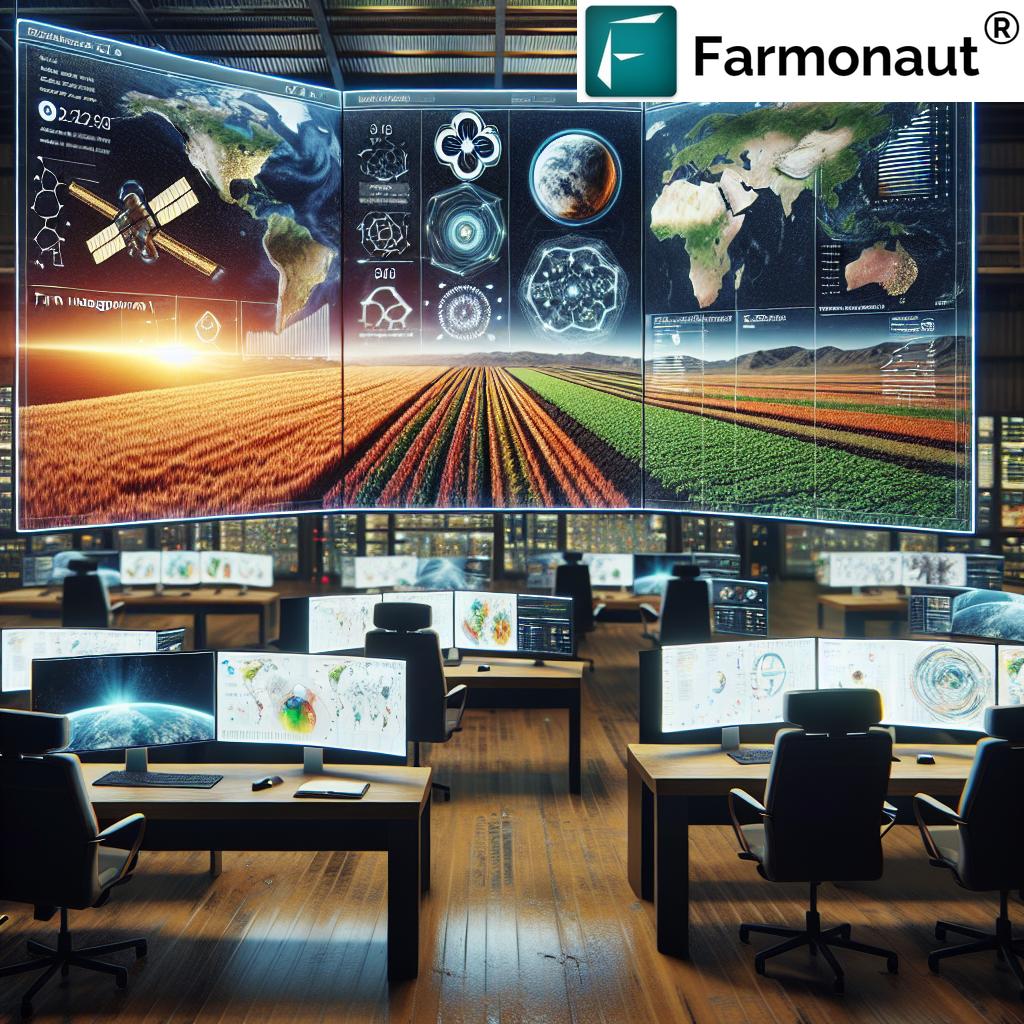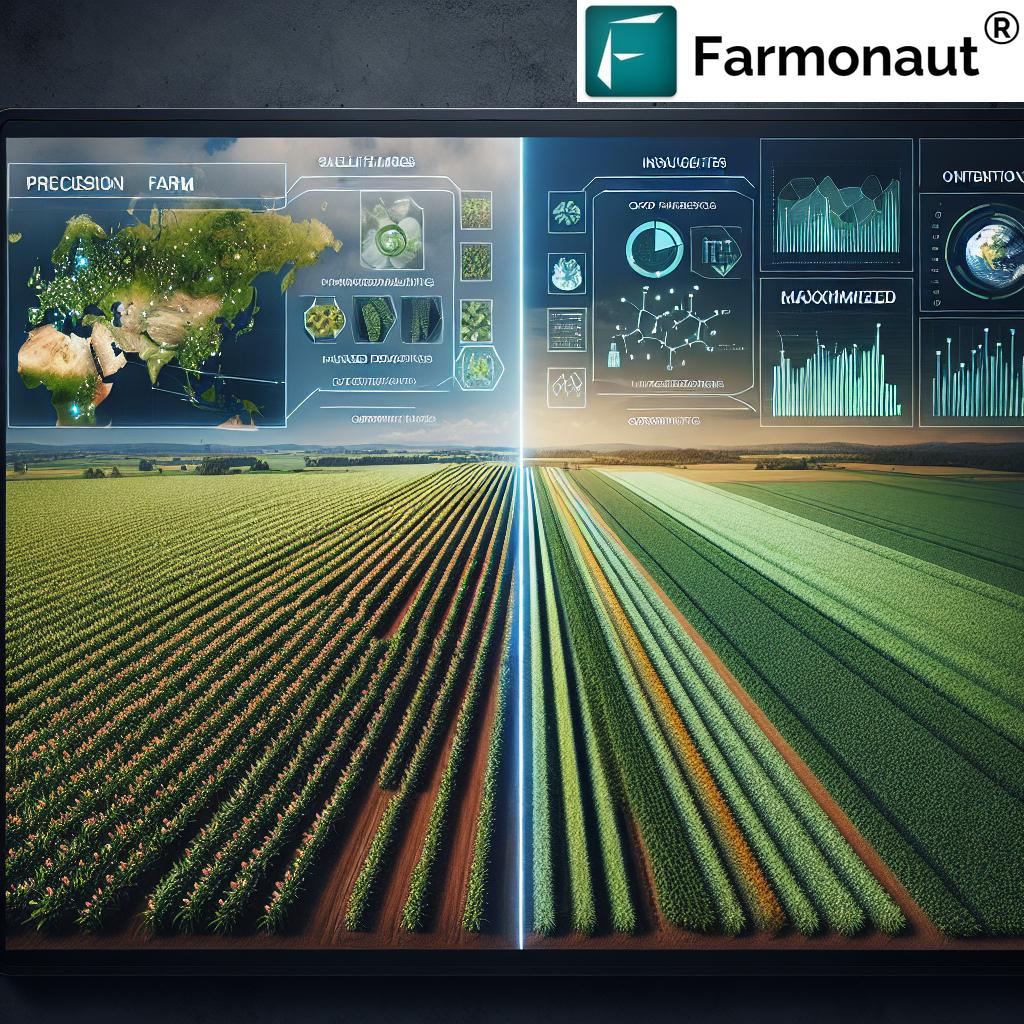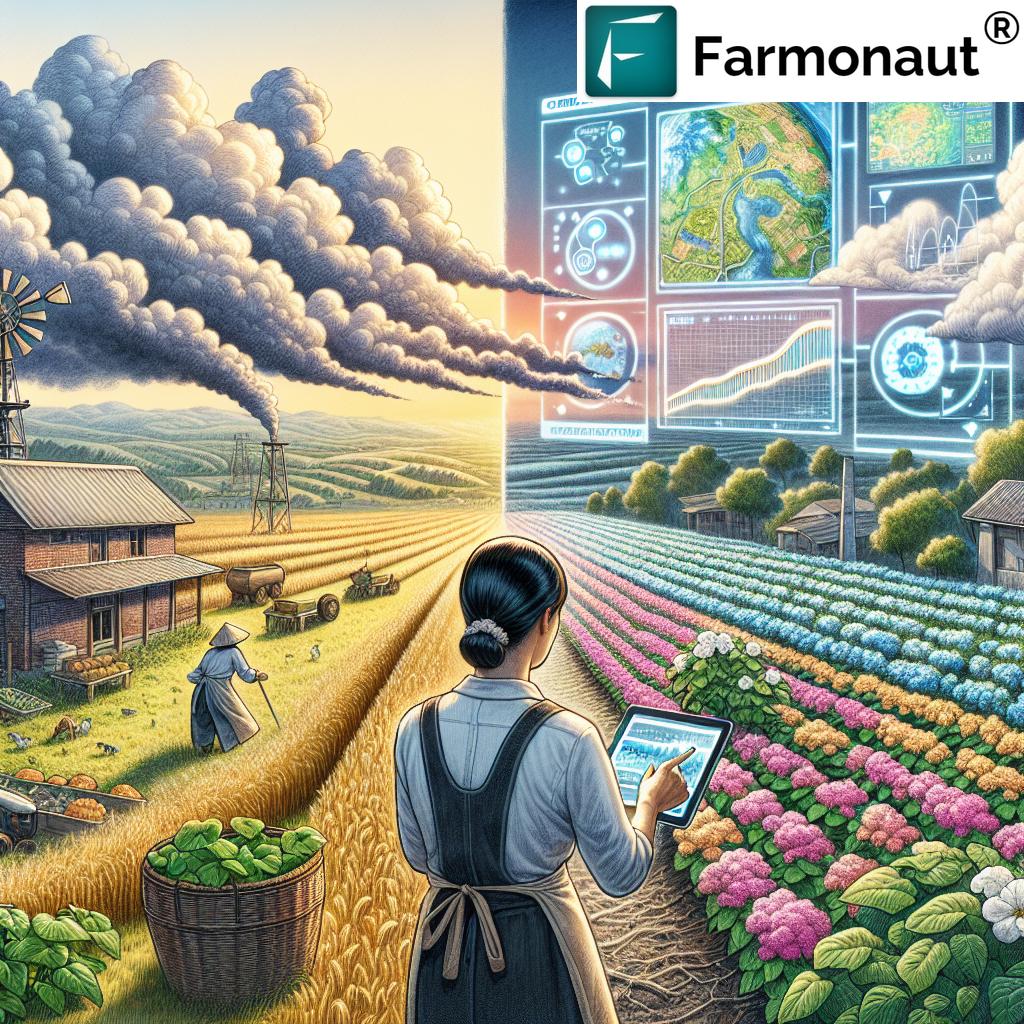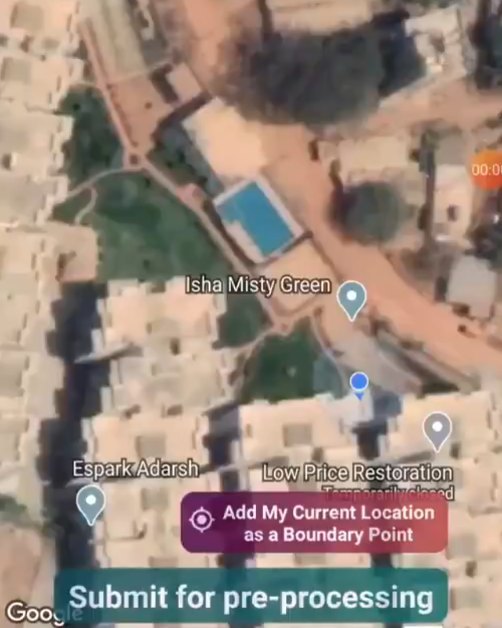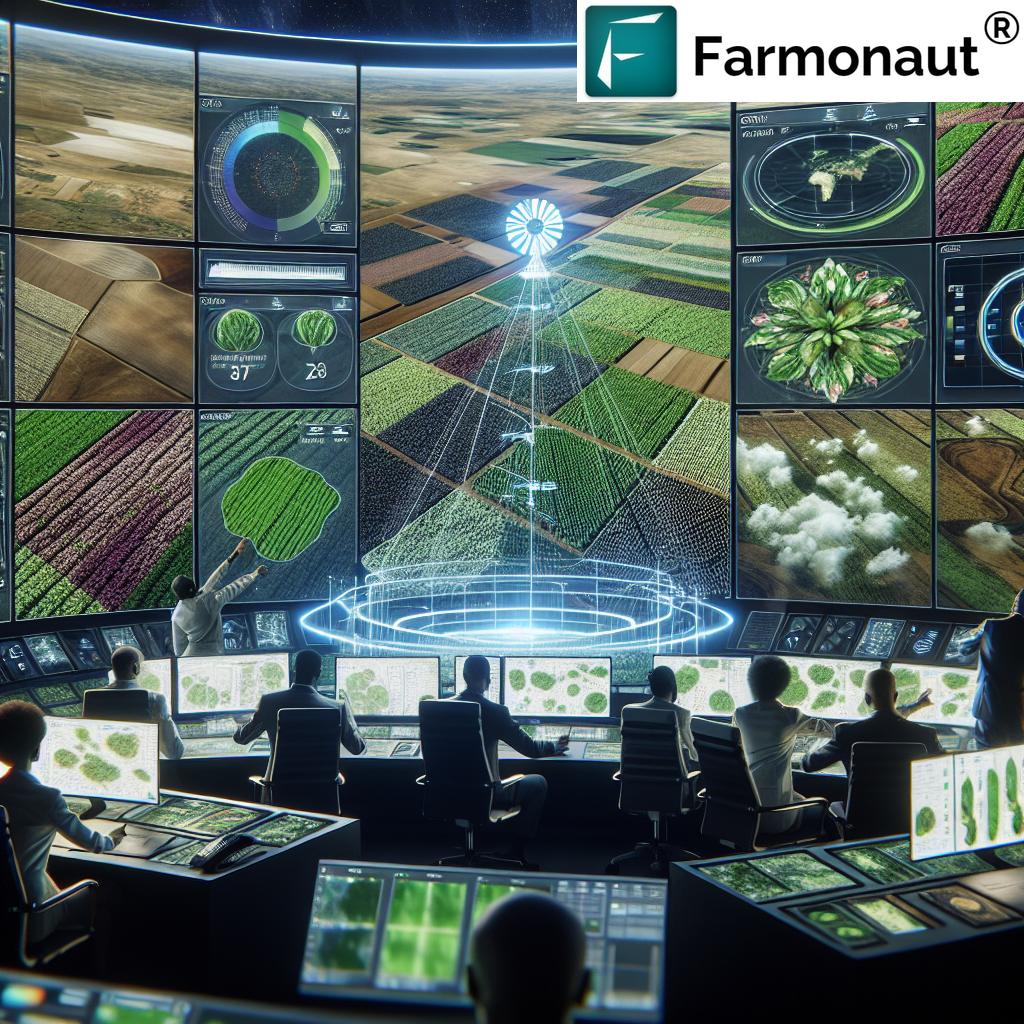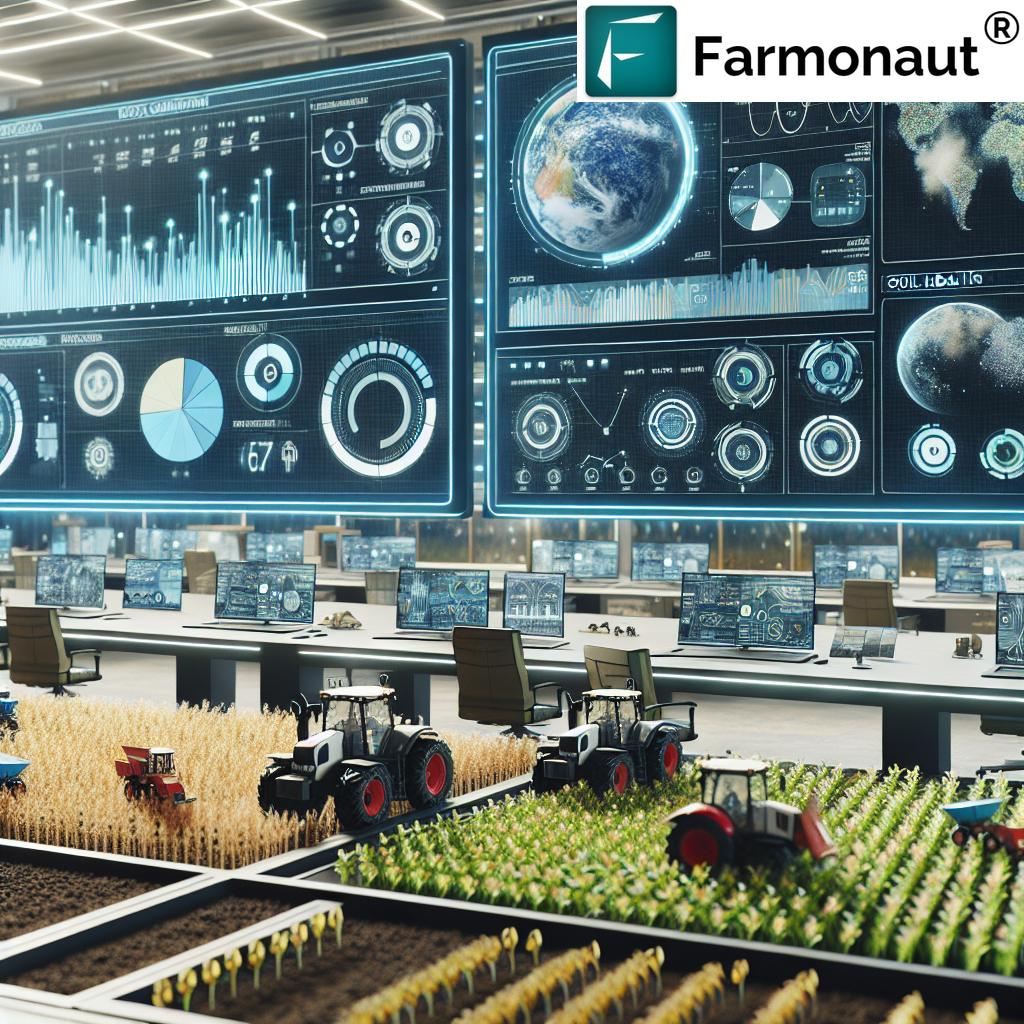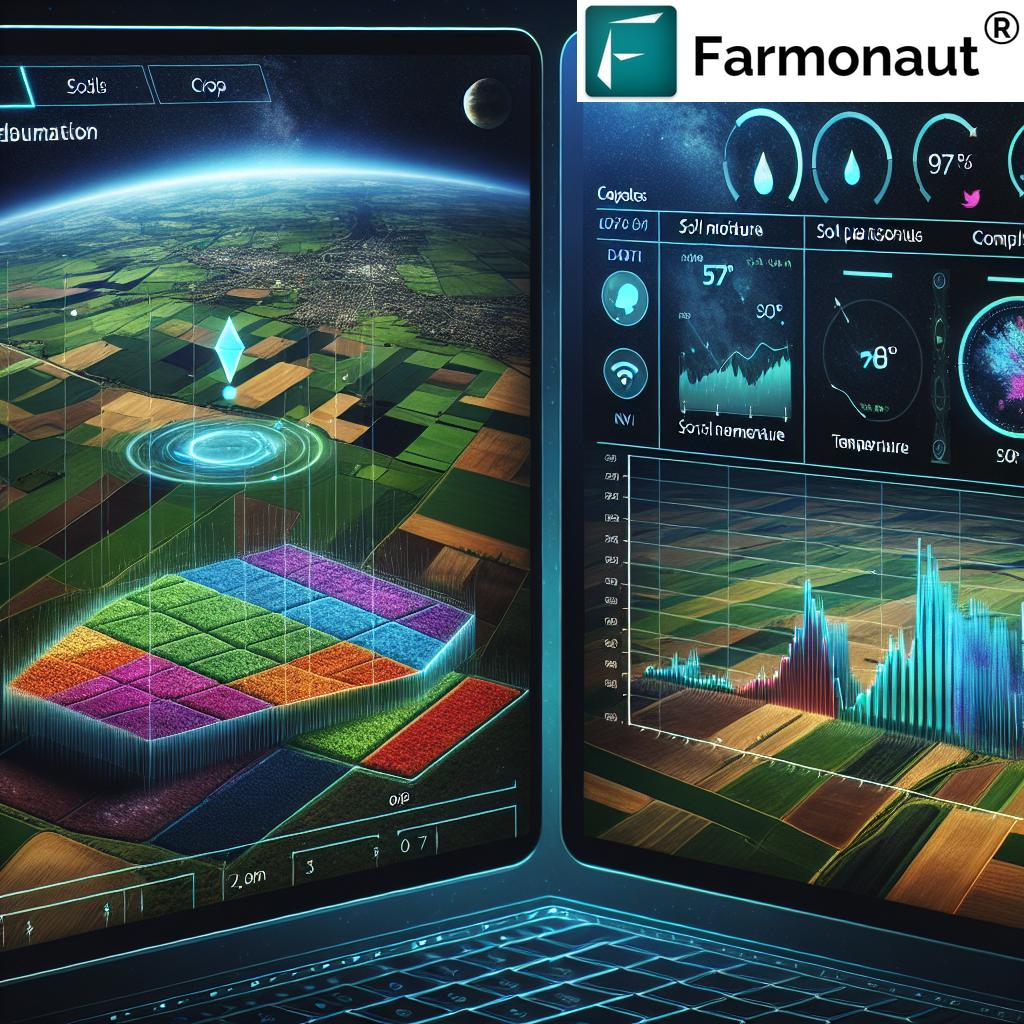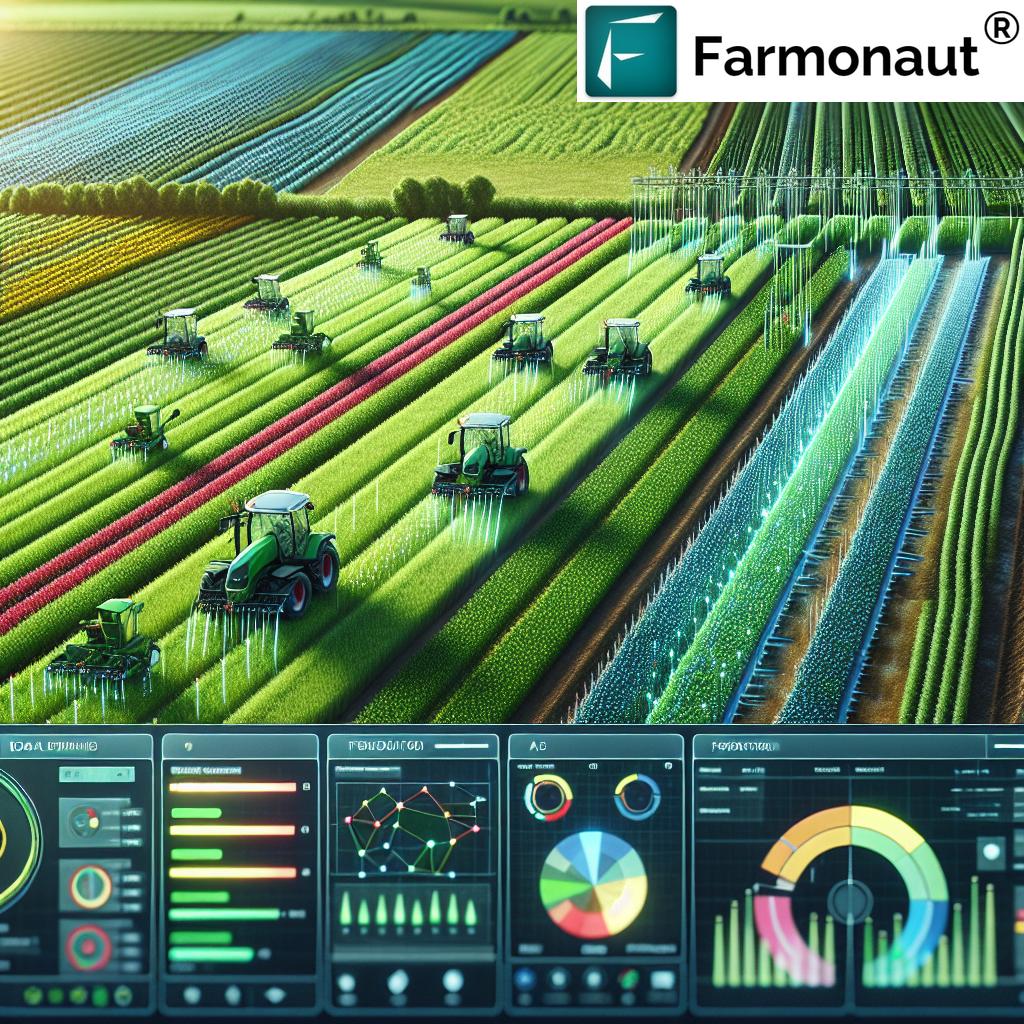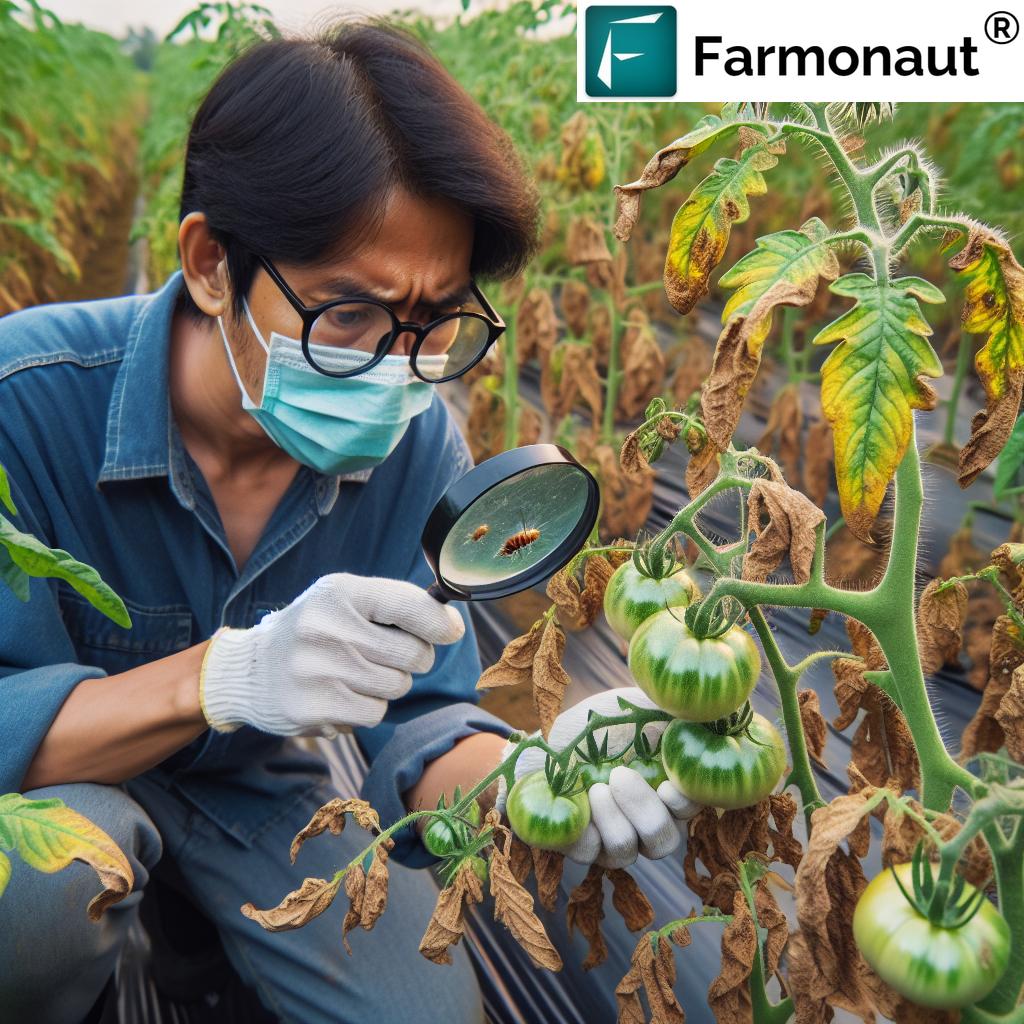Crop Forecast: 7 Shocking Tech Secrets for Higher Yields
Table of Contents
- Understanding Crop Forecasting: The Digital Revolution in Agriculture
- The Importance of Crop Forecasting in Modern Agriculture
- 7 Shocking Tech Secrets: Advanced Methods for Higher Yields
- Farmonaut: Pioneering Crop Forecasting with Technology
- Comparative Technology Impact Table
- Key Challenges in Crop Forecasting
- The Future of Crop Forecasting
- Frequently Asked Questions
- Conclusion
Understanding Crop Forecasting: The Digital Revolution in Agriculture, Farming, and Forestry
In today’s ever-evolving agricultural landscape, crop forecasting stands as a critical component of sustainable management strategies in agriculture, farming, and forestry. As stakeholders—farmers, agribusinesses, policymakers, and investors—we face mounting challenges due to climate change impact on crops, market volatility, and resource scarcity. Likewise, the shifts towards data-driven agriculture, powered by remote sensing and artificial intelligence in farming, are reshaping how we predict yields, optimize resource allocation, and safeguard food security worldwide.
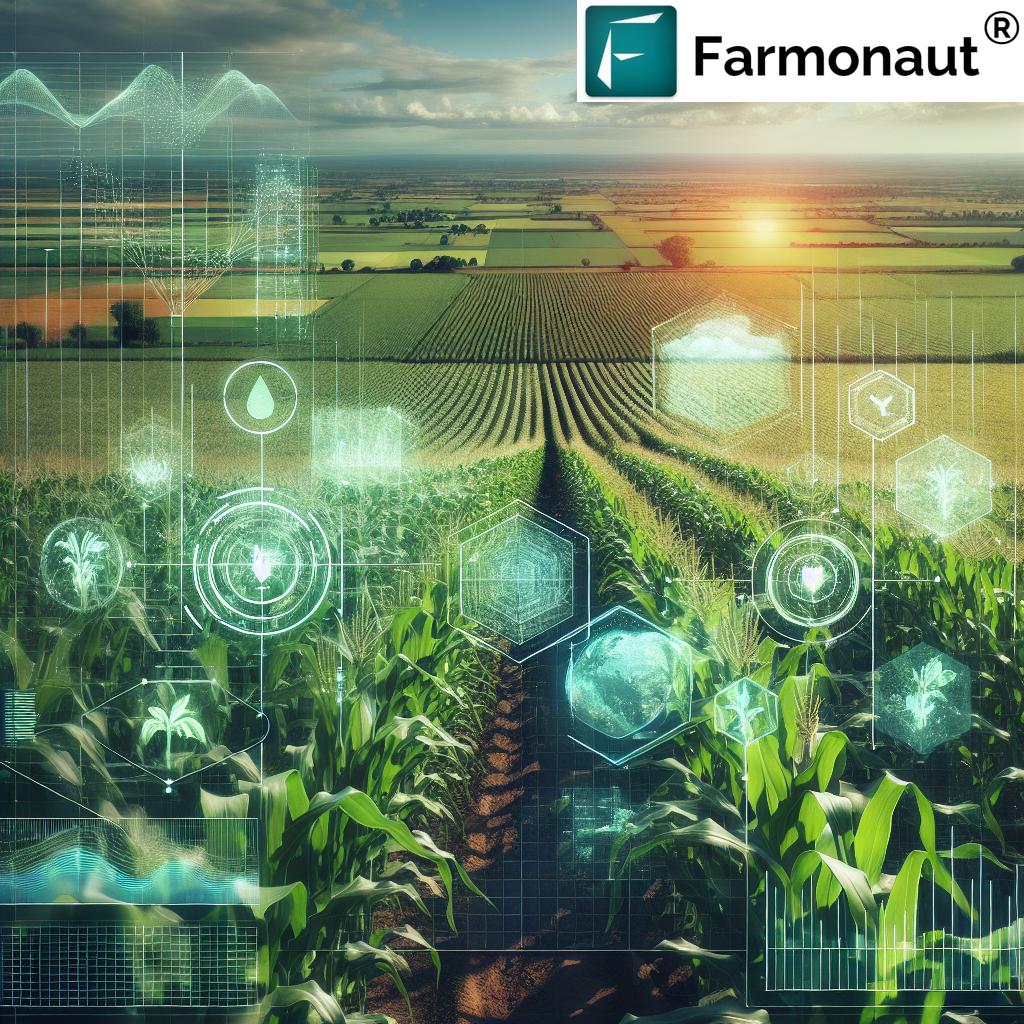
But what exactly is crop forecasting? It involves predicting yields and quality of crops before harvest, leveraging the latest techniques, models, data sources, and AI-driven methodologies. Accurate forecasts empower us to make even more informed decisions about resource management, market strategies, and comprehensive risk mitigation—all while anticipating potential climate adversities.
For those seeking real-time crop health monitoring and advanced yield prediction, check out our Crop Plantation & Forest Advisory Platform—your one-stop shop for integrating innovation into all scales of farming and forestry management.
The Importance of Crop Forecasting in Modern Agriculture
As we transition to a future where efficient food production is paramount, crop forecasting takes center stage. Let’s highlight the primary reasons why accurate crop forecasts are absolutely essential in steering the agricultural sector toward resilience, profitability, and sustainability:
- Resource Management: Predictive systems enable us to optimize inputs such as fertilizers, water, and labor, ensuring cost-effective and efficient farming operations.
- Market Planning: Leveraging accurate yield estimates, stakeholders can better determine supply, stabilize prices, and proactively prevent market shortages or gluts.
- Risk Mitigation: Early identification of potential yield fluctuations allows for a range of strategies such as insurance planning, diversification, or alternative crop choices.
- Policy Formulation: Governments and organizations rely on forecasting to craft food security, trade, and subsidy policies.
In the dynamic climate of the U.S. Corn Belt and similar agro-regions, these advances have profound impacts—often driving national and international food security outcomes.
7 Shocking Tech Secrets: Advanced Methods for Higher Yields in Crop Forecasting
The crop forecasting domain has seen a revolution—driven by innovative technologies that dramatically enhance yield accuracy, resilience, and resource management. Let’s delve into seven groundbreaking tech advances that empower our stakeholders for a more predictable and bountiful agricultural future:
1. Satellite Imagery: The Eyes in the Sky of Remote Sensing in Agriculture
Remote sensing in agriculture leverages satellite imagery for crop monitoring to capture wide-scale, high-frequency, and multispectral data. We can remotely analyze vegetative health (NDVI), soil moisture, and even subtle anomalies across massive crop areas in real-time. This approach is particularly critical in large zones like the Corn Belt or developing regions where on-ground data may be scarce.
Farmonaut employs advanced satellite-based crop health monitoring to bring actionable field insights to mobile devices. Farmers use these tools to make data-backed decisions on irrigation, fertilizer usage, and pest management—directly boosting their yields and reducing wastage.
2. Drones and UAVs: On-Demand Aerial Crop Scouting
Unmanned aerial vehicles (UAVs) equipped with multispectral and thermal sensors provide crop-specific diagnostics on a micro-scale. From detecting localized pest infestations to evaluating plant vigor or stress before symptoms develop, drones greatly enhance the accuracy and timeliness of yield predictions.
- High-resolution imagery for specific plots
- Rapid post-weather-event assessment
- Precision spot spraying with resource savings
These UAV systems integrate seamlessly with broader satellite-driven platforms, giving a complete picture from canopy to ground.
3. AI and Machine Learning Crop Yield Models
Among the most transformative advances, machine learning crop yield models bring unprecedented accuracy and scalability. By analyzing enormous datasets—including weather patterns, soil health, genetic profiles, and past yield data—AI models like neural networks predict both short- and long-term outcomes. For example, ensemble methods combining CNNs, RNNs, or decision trees have outperformed traditional statistical approaches—with up to 30% accuracy improvements in studies of the U.S. Corn Belt.
Farmonaut’s own platform employs similar methodologies, offering real-time, AI-driven recommendations through its Jeevn AI Advisory System. This empowers us to make faster, better decisions—significantly enhancing yields and resource use.
4. IoT-Enabled Soil Sensors and In-Field Data Collection
While satellites provide macro insights, IoT soil sensors bring hyperlocal intelligence to crop forecasting. By monitoring soil moisture, nutrients, and temperature at various depths, these devices allow precise irrigation scheduling, fertilizer application, and root-zone health management. When combined with weather models and historical farm data, these sensors close the data loop for comprehensive predictive analytics.
- Detect early signs of stress and disease
- Optimize water usage during drought or excess rainfall
- Boost overall yield quality and stability
5. Big Data Analytics: Harnessing Comprehensive Datasets
The power of big data analytics lies in combining millions of data points—satellite, drone, sensor, market, and weather—into a single platform for actionable insights. In data-driven agriculture, we can identify subtle patterns, model future yield scenarios, and even forecast market swings before they occur.
Farmonaut excels by pulling from worldwide satellite imagery, integrating datasets, and serving both individual farmers and enterprises with mobile-responsive, easy-to-use analytics platforms. This accessibility is a key differentiator, making precision agriculture feasible for farms of all scales.
6. Weather Modeling Platforms and Climate-Adaptive Planning
Unpredictable weather is the main disruptor of accurate agricultural yield prediction. Today’s weather modeling platforms integrate real-time remote sensor data with AI-driven forecasts, giving us early warning on droughts, floods, or temperature extremes. By aligning sowing, irrigation, and harvest schedules to these forecasts, we minimize risk and optimize output, thus adapting to climate change impact on crops.
- Reduce crop losses due to unseen events
- Mitigate insurance and financial exposure
- Maximize productivity despite climate shifts
Interested in insurance and credit access? The Farmonaut Satellite-Based Crop Loan & Insurance Platform delivers secure, satellite-verified solutions for financial institutions and farmers.
7. Blockchain-Based Traceability for Quality and Transparency
Blockchain technology is making waves in agriculture by enabling traceability solutions for crop supply chains. By recording secure, tamper-proof data at every stage—planting, harvesting, processing, and delivery—blockchain ensures authenticity, transparency, and helps mitigate fraud.
Farmonaut’s Product Traceability Platform is especially valuable to food and textile sectors. It guarantees transparency, increases consumer trust, and ultimately supports quality assurance for stakeholders globally.
For sophisticated plantation oversight and logistics optimization,
explore our Large-Scale Farm Management App
and Fleet Management Solutions—helping you drive efficiency from the field to the market.
Farmonaut: Pioneering Data-Driven Crop Forecasting for the Modern Era
At Farmonaut, our mission is to democratize precision agriculture for all stakeholders. Utilizing cutting-edge satellite imagery, AI, machine learning, and blockchain, we address every challenge in crop forecasting and resource management—all in a cost-effective, scalable, and globally accessible way.
- Satellite-Based Crop Health Monitoring: Real-time NDVI, soil moisture, and plant stress maps at your fingertips—supporting rapid, informed decisions for optimum output.
- Jeevn AI Advisory System: Personalized, AI-powered recommendations based on live satellite and field data, providing actionable insights to enhance yields and sustainability.
- Blockchain Traceability: End-to-end supply chain authentication, reducing fraud and building consumer trust for agricultural products.
- Fleet & Resource Management: Digital tracking and optimization of agricultural machinery and logistics for lower costs and greater safety.
- Carbon Footprinting: Tools for monitoring, measuring, and minimizing environmental footprint—a must for meeting future sustainability goals.
Explore more at our Carbon Footprinting interface.
Why choose Farmonaut? We offer subscription-based packages accessible via Android, iOS, and web platforms. Our APIs (API access | developer docs) allow seamless integration for businesses, developers, and research organizations.
From smallholder farmers to global agribusinesses and government agencies, Farmonaut’s modular system is built to scale—delivering precision, reliability, and actionable data like never before.

Comparative Technology Impact Table: Crop Forecasting Technologies & Their Yield Potential
| Technology Name | Main Function | Estimated Yield Increase (%) | Data Requirement Level | Implementation Complexity | Climate Adaptability |
|---|---|---|---|---|---|
| AI-based Satellite Monitoring (e.g., Farmonaut) | Real-time crop health & yield prediction using AI and multispectral satellite imagery | 15–30% | Medium | Moderate | High |
| IoT Soil Sensors | Continuous in-field soil and environment data collection | 8–15% | High | Advanced | Medium |
| Machine Learning Yield Prediction | Complex algorithmic prediction using multi-source datasets | 20–30% | High | Advanced | High |
| Drones (UAVs) for Field Analysis | High-res field mapping & on-demand health scouting | 10–20% | Medium | Moderate | Medium |
| Weather Modeling Platforms | Forecast weather variability, support strategic planning | 6–12% | Low | Easy | High |
| Remote Sensing (Satellite Imagery) | Large-scale crop growth & stress detection | 12–20% | Medium | Moderate | High |
| Big Data Analytics | Integration & analysis of multi-source datasets for informed decisions | 10–25% | High | Advanced | High |
Comparative table of crop forecasting technologies including satellite monitoring, IoT sensors, machine learning yield prediction, and more.
Key Challenges in Crop Forecasting: Navigating the Future of Agriculture
Despite our technological momentum, several challenges complicate reliable crop forecasting:
- Climate Variability: New extremes in weather patterns, such as unpredictable rains, droughts, or temperature spikes, test the robustness of current forecasting models.
- Data Quality and Availability: In regions with limited digital or sensor infrastructure, inconsistent or incomplete datasets remain a bottleneck for accurate predictions.
- Technological Limitations: High-resolution remote sensing data is not always accessible (especially in developing countries), and creating reliable crop masks for large agricultural areas can be complex.
- Complex System Interactions: The myriad of factors—soil health, crop genetics, pest pressure, farmer practices—create complex datasets that challenge even the best algorithms.
Our approach? Ongoing research, open data sharing, and innovation in integrating sensor, satellite, and market datasets will be the linchpin to future resilience.
The Future of Crop Forecasting: From Challenges to Comprehensive Solutions
The next era of crop forecasting will be defined by how well we combine advanced methodologies with cooperative, accessible platforms like Farmonaut. Here’s what we envision for the coming years:
- Big Data Integration: Seamlessly unifying satellite imagery, soil sensors, and market and weather data for more granular, accurate crop forecasts.
- Sophisticated AI & Algorithm Advancements: Deep neural networks and ensemble models capable of simulating complex, location-specific scenarios—improving prediction accuracy even under climate duress.
- Climate-Responsive Forecasting: Embedding climate change impact variables into AI models to help farmers adapt with resilience-building strategies.
- Global Data Collaboration: Open exchanges between governments, researchers, and field-level actors, increasing both the reliability and scale of forecasts.
- Digital Equity for Smallholders: Expansion of affordable, mobile-friendly platforms (like Farmonaut) that lower cost-barriers and bring high-tech solutions to all corners of the world.
As we look to the future, continuous advancements in remote sensing, machine learning crop yield models, and agroforestry practices will ensure smarter, more precise, and sustainable food systems.
Farmonaut Subscription Options
Choose the plan that fits your needs—access real-time crop health, AI forecasting, resource management, and more:
Frequently Asked Questions: Crop Forecasting & Technology-Driven Agriculture
What is crop forecasting and why is it important?
Crop forecasting is the process of predicting agricultural yields and quality before harvest using data-driven approaches like satellite imagery, AI, and historical analysis. It’s crucial because it promotes efficient resource management, stabilizes market prices, helps mitigate climate risks, and supports food security policies.
How do technologies like satellite imagery and AI improve crop yield predictions?
Remote sensing in agriculture uses satellite and drone imagery to monitor crop health and environmental conditions on a wide scale. Machine learning crop yield models and AI then analyze the vast datasets, detecting patterns and predicting yields far more accurately than traditional methods—often increasing accuracy by 20–30%.
How does Farmonaut support data-driven agriculture?
Farmonaut integrates advanced satellite imaging, machine learning, and AI-powered advisory tools to deliver real-time data and recommendations. Accessible by web and mobile, Farmonaut makes precision agriculture affordable and simple for everyone—we serve individual farmers, large agribusinesses, and government agencies alike.
Can these methods help in facing unpredictable weather or climate change?
Yes, by continuously monitoring conditions and feeding real-time data into weather models and AI-driven platforms, farmers gain early warnings. This enables them to plan and adapt quickly, significantly reducing the risks associated with climate change impact on crops.
What are the main challenges in applying advanced crop forecasting in developing regions?
The biggest challenges include limited access to high-resolution remote sensing data, unreliable infrastructure for data collection, and technological barriers for smaller farms. Farmonaut addresses these by providing mobile-friendly, cost-effective, and scalable tools suitable for any geography—making modern crop forecasting more inclusive.
How do blockchain-based traceability solutions work in agriculture?
Blockchain traceability records every stage of the crop’s journey—from field to table—on a secure and transparent platform. This increases supply chain security, reduces fraud, and strengthens consumer trust, especially for food and textile sectors.
Are there APIs available for integrating advanced crop forecasting into my agtech solution?
Absolutely. Farmonaut provides robust API access and developer documentation for easy integration into third-party platforms, apps, or research projects, supporting a seamless, digital farming experience.
Conclusion: Charting a Resilient, Data-Driven Future for Crop Forecasting
Crop forecasting is unlocking a new era of sustainable, high-efficacy agriculture, farming, and forestry. As we’ve explored, remote sensing, AI and machine learning, blockchain traceability, and big data analytics are driving radical advancements in yield prediction—enabling us to make smarter, more informed decisions than ever before.
The challenges are real: climate change, data gaps, and technological hurdles demand a combination of innovation and inclusivity. At Farmonaut, we’re dedicated to bridging these divides—offering accessible, scalable, and affordable technology to farms of every size, everywhere on the planet.
Join us in transforming agriculture with technology and innovation! Explore how you can unlock the secrets to higher yields and a resilient agricultural future today.
Stay informed. Stay resilient. Let’s forecast a brighter agricultural tomorrow, together.





